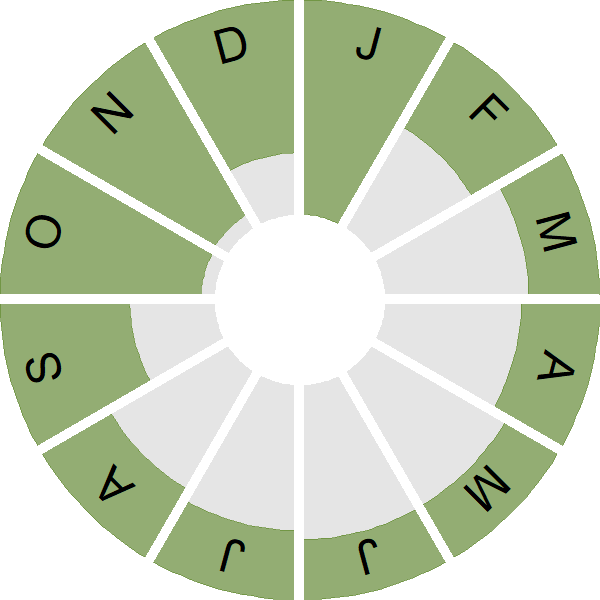Ruddy Duck

Introduction
Originally from North America, escapees from the WWTs collection at Slimbridge founded a population in southern England that has since been eradicated for conservation reasons.
The Ruddy Duck found a ready-made home on the West Midlands reservoirs, from where it then spread further afield. Individuals that reached Spain threatened the rare White-headed Duck because of interbreeding. This is the reason that action had to be taken, through a Ruddy Duck cull.

Key Stats
Identification
Songs and Calls
Call:
Status and Trends
Conservation Status
Population Change
Ruddy Ducks colonised the UK following accidental escapes of captive birds from WWT Slimbridge in the 1950s and quickly went on to breed and expand their breeding range; numbers peaked at 6,000 wintering individuals in 2000 [Balmer et al. 2013]. The number of breeding pairs has now reduced to one or two and recent estimates suggest there are only around 15 individuals left in the UK, with breeding attempts being sporadic [Eaton et al. 2023].
Distribution
Ruddy Ducks forned a small feral population in southwest England following a series of escapes from WWT Slimbridge, Gloucestershire in the late 1950s. Owing to hybridisation with endangered White-headed Ducks, a campaign to erradicate Ruddy Ducks from the UK was initiated in 2005
Occupied 10-km squares in UK
or view it on Bird Atlas Mapstore.
or view it on Bird Atlas Mapstore.
European Distribution Map
Distribution Change
Ruddy Duck shows a major range contraction as the non-native population has been controlled.
Change in occupied 10-km squares in the UK
or view it on Bird Atlas Mapstore.
or view it on Bird Atlas Mapstore.
Seasonality
Formerly a resident naturalised escapee ,the current pattern of occurrence for Ruddy Duck is likely to be less continuous owing to a program of eradication.
Weekly pattern of occurrence
The graph shows when the species is present in the UK, with taller bars indicating a higher likelihood of encountering the species in appropriate regions and habitats.

Movement
Britain & Ireland movement
Foreign locations of birds ringed or recovered in Britain & Ireland
Dots show the foreign destinations of birds ringed in Britain & Ireland, and the origins of birds ringed overseas that were subsequently recaptured, resighted or found dead in Britain & Ireland. Dot colours indicate the time of year that the species was present at the location.
- Winter (Nov-Feb)
- Spring (Mar-Apr)
- Summer (May-Jul)
- Autumn (Aug-Oct)

Biology
Productivity and Nesting
Nesting timing
Egg measurements
Clutch Size
Survival and Longevity
Survival is shown as the proportion of birds surviving from one year to the next and is derived from bird ringing data. It can also be used to estimate how long birds typically live.
View number ringed each year in the Online Ringing Report.
lifespan
Biometrics
Wing length and body weights are from live birds (source).
Ring Size
Classification, names and codes
Classification and Codes
- Order: Anseriformes
- Family: Anatidae
- Scientific name: Oxyura jamaicensis
- Authority: JF Gmelin, 1789
- BTO 2-letter code: RY
- BTO 5-letter code: RUDDU
- Euring code number: 2250
Alternate species names
- Catalan: malvasia de Jamaica
- Czech: kachnice kaštanová
- Danish: Amerikansk Skarveand
- Dutch: Rosse Stekelstaart
- Estonian: valgepõsk-händpart
- Finnish: kuparisorsa
- French: Érismature rousse
- German: Schwarzkopf-Ruderente
- Hungarian: halcsontfarkú réce
- Icelandic: Hrókönd
- Irish: Lacha Rua
- Italian: Gobbo della Giamaica
- Latvian: Jamaikas zilknabis
- Lithuanian: baltaskruoste staciauodege
- Norwegian: Stivhaleand
- Polish: sterniczka jamajska
- Portuguese: pato-rabo-alçado-americano
- Slovak: potápnica bielolíca
- Slovenian: belolicna trdorepka
- Spanish: Malvasía canela
- Swedish: amerikansk kopparand
- Welsh: Hwyaden Goch
Research
Causes of Change and Solutions
Causes of change
In the 1980s the UK population of Ruddy Duck started to expand to the Continent and began breeding with the endangered White-headed Duck in Spain; hybridisation of the two species subsequently became the greatest threat to the White-headed Duck population [Henderson 2010]. As a result of this threat, a Government-led eradication programme of Ruddy Ducks was instigated in the UK in 2005 and by 2010, numbers had reduced by 95% [Henderson 2010]. The strategy in the UK is now to monitor and prioritise removal of any females to prevent breeding [Secretariat of the Bern Convention and Peter Cranswick 2022].

